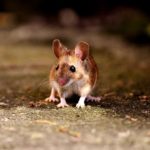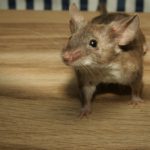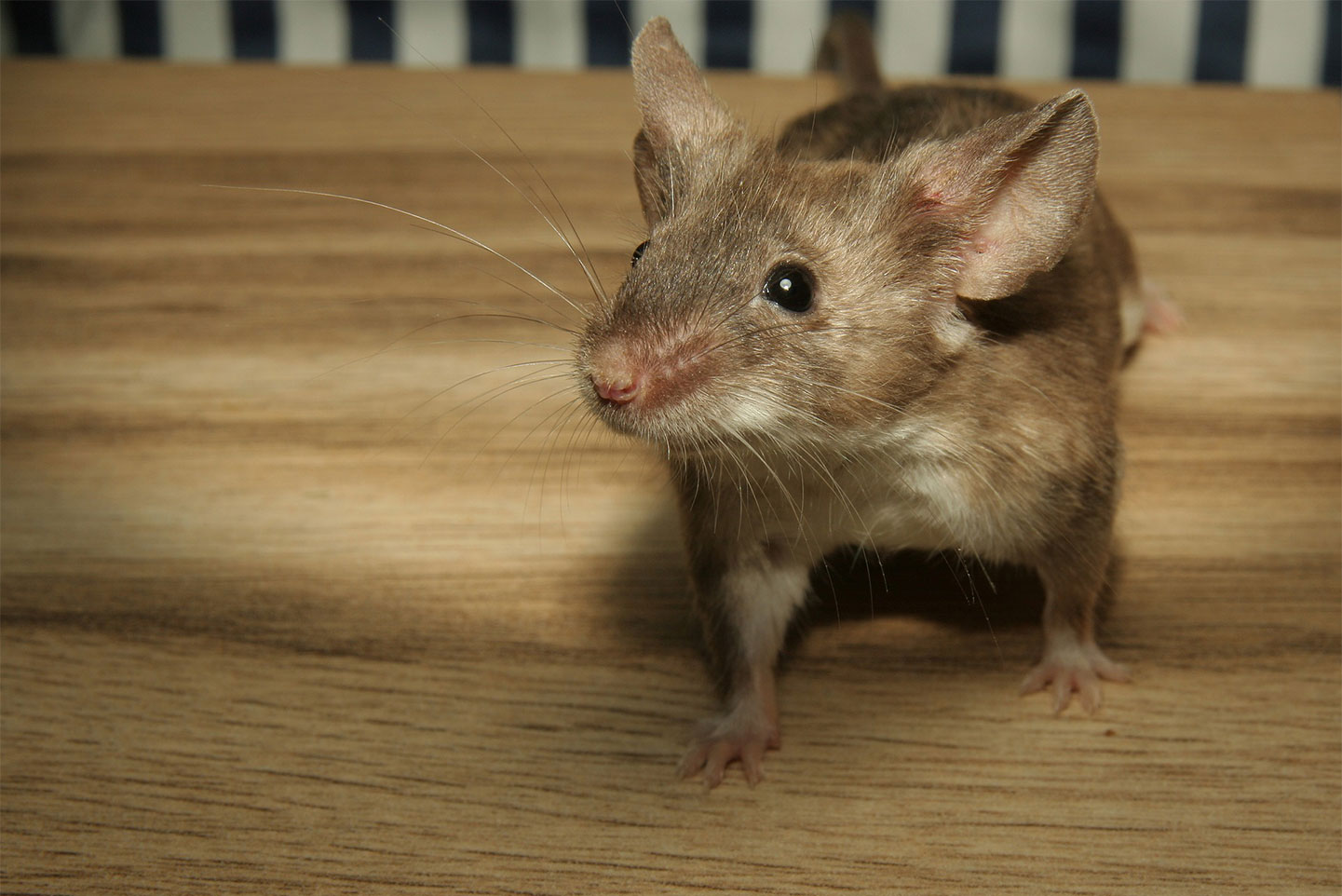(Mus musculus)
Description
Mice have a slender body with a blunt or tapered muzzle. They have little hair, but they are known for their prominent ears and hairless tail. Mice also have narrow hind feet and small, sharp claws.
Mice are often less than 5 inches long, not including the tail. Their tail may be as long as their body. Most mice are gray to brown in color, but may also be buff, blackish gray, bluish gray, reddish brown, or chocolate brown.

Additional Information
Habits & Behavior

The mice you see in your home are called house mice. Mice are nocturnal creatures, so you may not even see them in your home. Mice communicate with urine, with a dominant male mouse marking his territory with thousands of microdroplets of urine daily.
Mice do not need a lot of water to survive. They can survive long periods without water, as most of their water requirements can be met by their food.
Mice will make nests inside homes. Nesting areas may be found in drawers, shoeboxes, storage boxes, and under cabinets. You may also notice holes in walls and floorboards.
House mice stay primarily inside the home. They do not have a need to go outside and be exposed to predators.
Food
The normal diet of a mouse varies among species. When outdoors, the house mouse consumes seeds and insects. When indoors, though, it eats nearly anything digestible.
A house mouse may eat a variety of seeds, fruits, roots, rotting foods, and insects. The items mice might go for in your pantry are foods high in carbohydrates, like:
- Breads and other grains
- Nuts
- Seeds
- Strawberries
- Grapes
- Broccoli
- Kale
- Pet food
Their favorite foods are cereal and sugar. They also like to eat foods high in fat and protein such as nuts, bacon, butter, and sweets. Mice do not eat a lot at a time. They may make 20-30 visits to different food sites each night.
Reproduction
House mice may breed throughout the year. They can produce up to 14 litters per year, with as many as a dozen babies per litter. Some litters may have just 1-2 mice.
Mice reach sexual maturity rather quickly, at just 4-6 weeks of age. The gestation period is just three weeks. Plus, mice can mate immediately after giving birth, meaning mice can have litters every 25 days or so.
This cycle continues until the mouse dies. While the average mouse lifespan is only about 12 months when they live outdoors, this number can climb to 2-3 years for house mice that live indoors, as there are fewer predators.
Signs
Do you have mice in your home? Here are some common signs:
- Actual sightings. This is the most obvious sign you have mice, but it’s not easy to see them, as they are usually active at night. Normally, a mouse won’t come out in your presence, but it’s possible they may scurry out of a closet or through your floor. Keep in mind that if you see one mouse, there’s likely to be many more.
- Droppings. Small, black rod-shaped droppings are signs that there are mice in your house. These droppings are under 1/4 inch long.
- Footprints. House mice can be easily identified by their tracks. They usually leave four-toed prints with their front feet and five-toed prints with their hind feet.
- Odor. If you smell urine in your home, you may have mice. Mice use urine to mark their territory. It’s a strong, distinct smell that allows mice to communicate with each other.
- Burrows. Since mice like to burrow, you may find burrows that contain nesting materials, such as paper and fabric.
- Damaged items. House mice will nibble on furniture, clothes, wires, and other household items. They will also eat seeds, cereals, and other foods they can get their hands on. This means you may see gnaw marks on various items throughout your home, as well as damaged boxes and containers in the kitchen.
- Unusual pet behavior. If you see your cat or even your dog hanging around a certain area of the house more often, it may be because they detect the presence of mice. Animals have really strong senses and may be able to see, hear, and smell things you don’t.
Dangers
House mice are known for causing damage to personal property. The constant chewing of mice causes damage to electrical wires, clothing, and furniture. Mice have strong teeth that may also destroy storage boxes and electrical lines while building their nests. This can lead to fires.

Mice can contaminate surfaces and food sources within homes.Food contamination is not always obvious, so foods may be consumed unknowingly. Hantavirus and salmonellosis are particular concerns. People can get sick when inhaling particles released from mouse droppings, urine, and saliva.
Mice also have allergens in their urine, dander, and hair follicles. This can cause people to develop hay fever, allergies, and asthma.
Contact Us Today
Mice are not the cute and cuddly creatures you may see in cartoons. These rodents can cause some real damage to a home. Plus, they carry diseases that can harm your entire family.
Let the professionals at Stride Pest Control assist you with your mice infestations. Our friendly team is ready to help you take back your home using the safest and most effective products. Get a free consultation today by calling (512) 777-1339 (Austin) or (210) 547-8410 (San Antonio) or filling out the online form.
Average YOung produced by females every year
156
Mice seldom travel more than this to get food
10′-30′
a Mouse holes average size
1.5″
Average Lifespan of a mouse in months
12
Get a FREE Consultation


